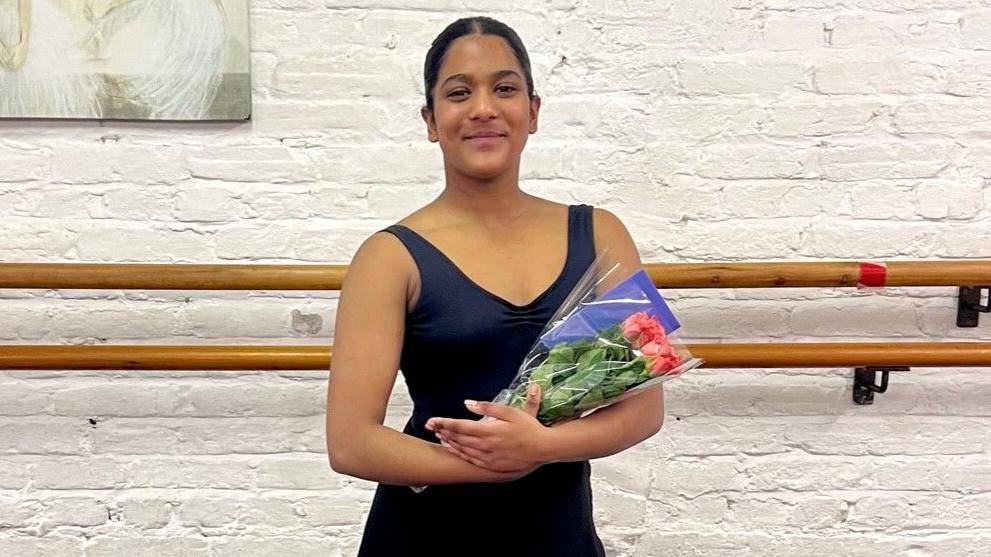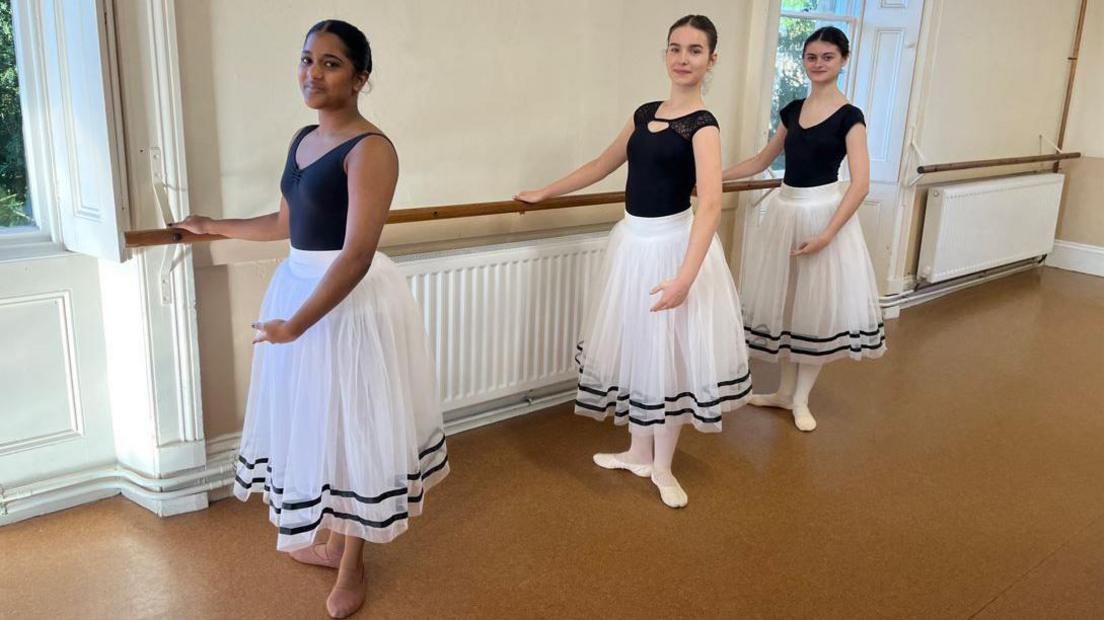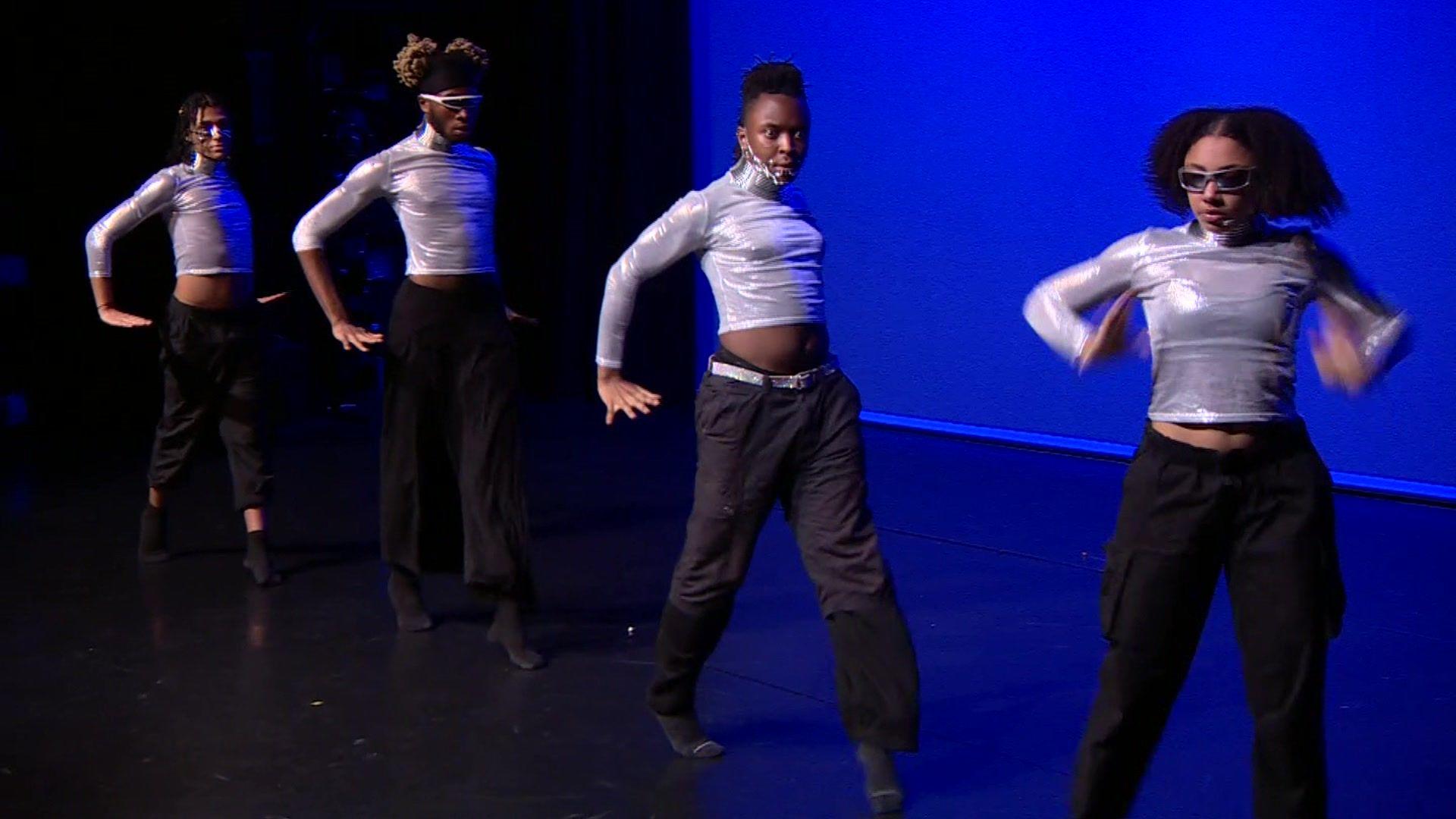BBC Young Reporter on the need for diverse ballet clothing

Jemima says there needs to be greater representation in ballet uniform
- Published
Jemima has always loved ballet but was left feeling excluded over the lack of different skin tone uniform options available to her.
The 16-year-old, from Clevedon is this years regional West winner of the BBC Young Reporter competition. Here she talks about what it means to her.
I have loved ballet ever since I was a child - dancing has always been my passion and form of expression.
Ballet is most associated with light pink - commonly known as ballet pink - for the uniform of tights and ballet shoes.
The light pink is designed to give the impression of extended lines while performing.
Yet I realised it wasn't having that effect on my performance as the light pink does not match my skin tone.

Jemima struggles to find ballet clothes that match her skin tone
Aged 10 I was auditioning for the Royal Ballet and decided to look at what other dancewear was available but found there were limited options for different coloured skin ballet tights and shoes that were actually easily available.
This made me feel excluded from the ballet world and uncomfortable while dancing - I felt upset by the few alternatives available for me.
As a result my mum helped me hand dye my uniform so that I would be able to wear ballet clothes that were best suited for my skin colour.
We experimented with different methods such as fabric dyes, makeup foundation and more recently, ballet shoe paint.
In a diversifying industry, dance clothes have slowly become more inclusive but there are still many dancewear companies and shops that offer little to no range in their uniforms which makes it difficult for many dancers to be able to wear what they would like to.

Jemima dyes her own ballet tights and shoes
Also many dance schools do not encourage or bring awareness to facilitate their dancers with tights and shoes in varying skin tone colours.
For example, their uniform will only allow "ballet pink" which is immediately overlooking those who would want to wear other shades of dancewear.
In the last decade, there has been more awareness of this issue and there are certain ballet and dancewear companies that specifically specialise in diversity.
Ballet Black employs only black and Asian heritage dancers and Shades Dancewear has created a wide range of colours within their dance clothing and shoe range.
Sense of belonging
They cater for everything from tights, ballet shoes, underwear and under-leotards that have previously only been available in pale skin shades.
Dancers whose skin tones match ballet pink can go to dance shops and find pointe shoes in lots of different styles and brands but dancers with different skin tones only have the option of ordering in and only have a few styles.
This is very limiting, as it is crucial for pointe shoes to fit your feet correctly which is hard to achieve with little variety.
I believe that it's important to have inclusive dancewear to enable dancers from a young age to feel included and have a sense of belonging in the dance world.
This will help to raise their self esteem and confidence, in ballet and their identity.
Get in touch
Tell us which stories we should cover in Bristol
Follow BBC Bristol on Facebook, external, X, external and Instagram, external. Send your story ideas to us on email or via WhatsApp on 0800 313 4630.
Related topics
- Published12 June 2024

- Published30 October 2024
